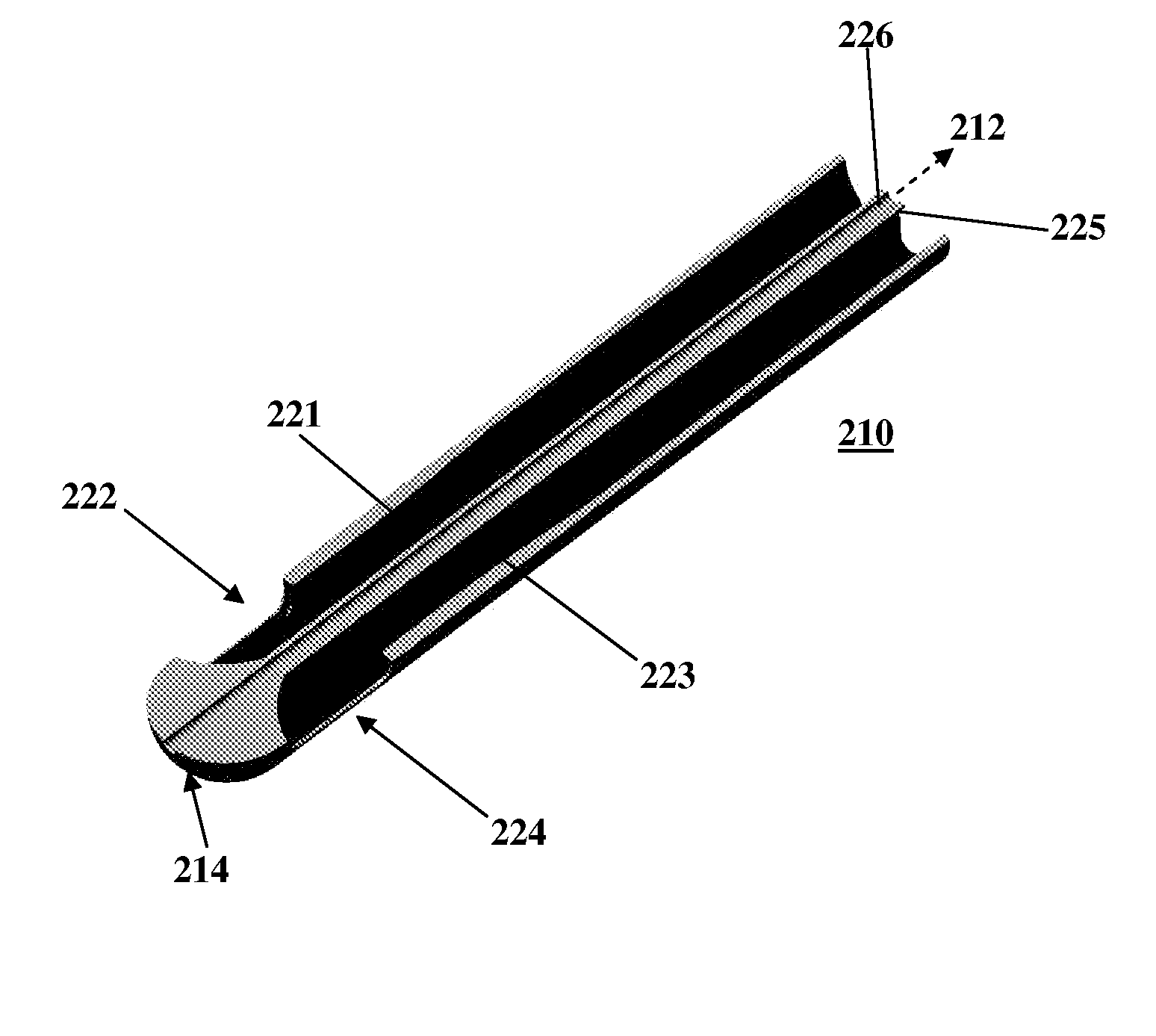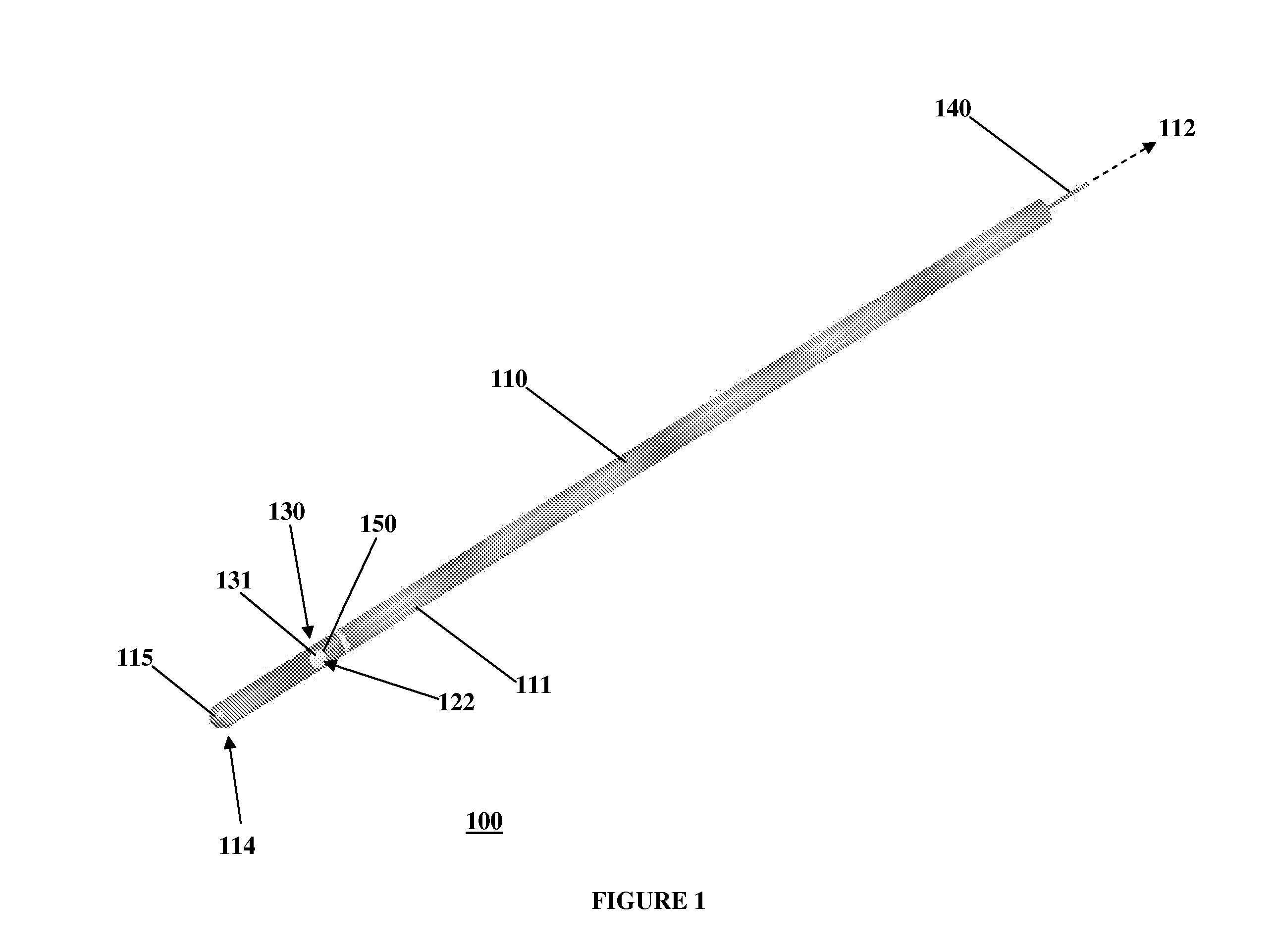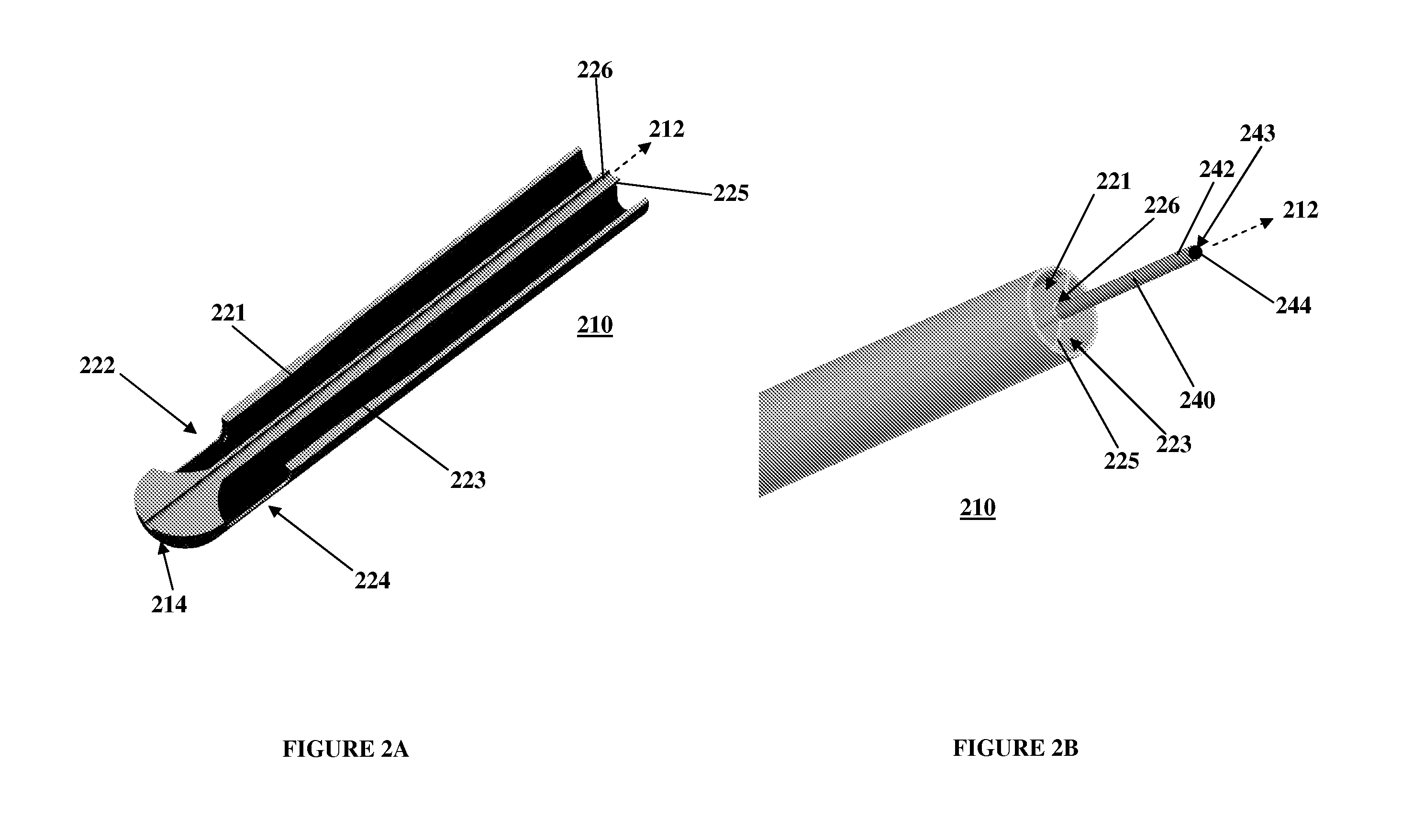Catheter device
a catheter and catheter technology, applied in the field of catheters, can solve the problems of limited durability of central venous catheters, poor or failed dialysis, etc., and achieve the effect of preventing infection
- Summary
- Abstract
- Description
- Claims
- Application Information
AI Technical Summary
Benefits of technology
Problems solved by technology
Method used
Image
Examples
Embodiment Construction
[0047] Referring to FIG. 1, an exemplary embodiment of the present invention is generally illustrated as a catheter 100. In particular, as described further below, the catheter 100 may be employed as a central venous catheter for hemodialysis. The catheter 100 has an elongate catheter body 110 which extends from a proximal end 112 to a distal end 114. The catheter 100 is generally flexible to permit positioning within a body passageway, such as a blood vessel. Flexibility, for instance, may be enhanced by incorporating multiple durometer elastomers or polymers within the parts of the catheter 100.
[0048] The catheter 100 has a lumen, or interior chamber, within the elongate catheter body 110. The interior chamber (not shown) acts to channel fluid between the proximal end 112 and the distal end 114. The interior chamber has a port, or chamber opening, 122 that passes through a body wall 111 of the catheter body 110. The chamber opening 122 allows the interior chamber to communicate w...
PUM
 Login to View More
Login to View More Abstract
Description
Claims
Application Information
 Login to View More
Login to View More - R&D
- Intellectual Property
- Life Sciences
- Materials
- Tech Scout
- Unparalleled Data Quality
- Higher Quality Content
- 60% Fewer Hallucinations
Browse by: Latest US Patents, China's latest patents, Technical Efficacy Thesaurus, Application Domain, Technology Topic, Popular Technical Reports.
© 2025 PatSnap. All rights reserved.Legal|Privacy policy|Modern Slavery Act Transparency Statement|Sitemap|About US| Contact US: help@patsnap.com



